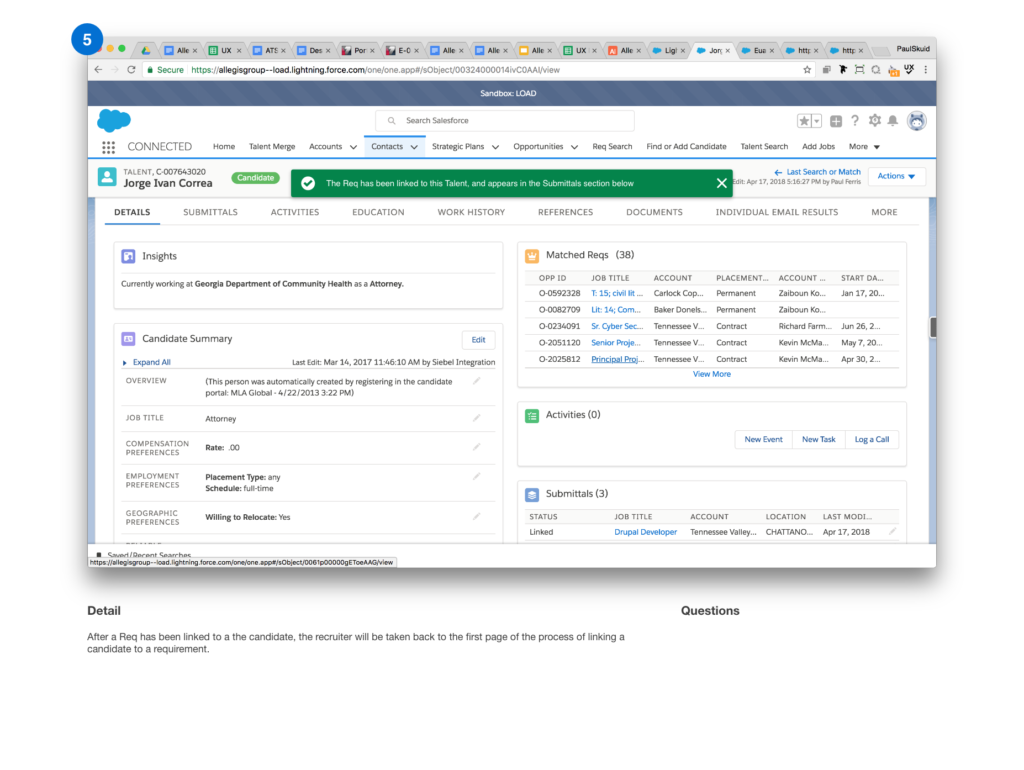
Journey Mapping
Allegis Group is the largest private recruiting company in the United States with multiple companies under its umbrella, specializing in finding explicit roles, ranging from warehouse work to information technology, or even law. When I started at Allegis, they were in the beginning stages of building web and mobile solutions for connecting recruiters, hiring companies, and job seekers (talent). To start with, leadership wanted to develop user journeys for recruiters, job seekers, and hiring managers.
Unfortunately, there were no personas to draw from and we had the constraint of facilitating workshops with business stakeholders only, so our original job seeker journey was done with proxy input. In time, and through much advocating, we were given a chance to run a workshop with actual job seekers. Many of the original assumptions of the stakeholders were validated, and we were able to correct others. The business was open to learn from their challenged assumptions, which opened doors for more in-depth future research.

Add to my lists | feature:
Problem
Recruiters needed an easy way to add potential job candidates to a current or new list of candidates to the respective job opportunities.
Research
How do we redesign the functions of adding candidates to lists so it’s easier and more intuitive to do?
Result
An easily accessible method for creating lists and adding candidates to those lists.
Research
Our hypothesis was; if we improve the ease of viewing, finding and adding candidates in lists, users will be able to:
- More easily generate a solid network of potential candidates
- Have better visibility into who is in their current networks
The research was done by myself and the Product Manager, Paul from Skuid. Skuid was contracted by Allegis to oversee the creation of the new Allegis, Applicant Tracking System (ATS). We would go to recruitment offices and shadow recruiters while they used their current (old) ATS, paying attention to when they needed to create new lists, and add candidates to the lists they had created. I would then use the (old) ATS to take screenshots of the current processes and take detailed notes to aid in ideation of new methods in the new Salesforce-based ATS. The old ATS was very convoluted, clunky, and needed many hours of training to use.
Result
After gaining an understanding of how recruiters needed lists to work for them, I started iterating on ideas by sketching, then building simple prototypes using Sketch, InVision , and eventually Adobe XD. Through this iteration and testing process we came to the final outcomes in the design below.
Mockups
Adding Talent to a List
Submitting a candidate (talent) | feature:
Mockups
There are many methods for submitting candidates, for instance: linking a Talent from a Requirement, linking from a Requirement to a Talent, linking a Talent to a Requirement from inside a Search, linking a Talent to a Requirement using Search Automatch, and viewing a Talents history of submittals to different Requirements. Below are two versions:





















